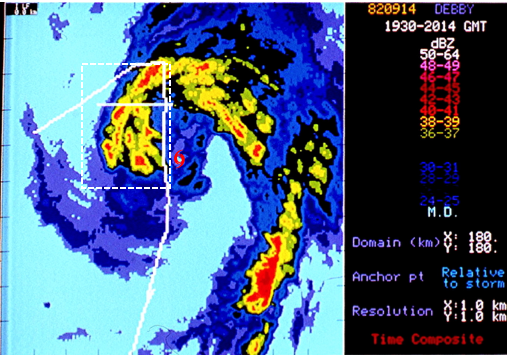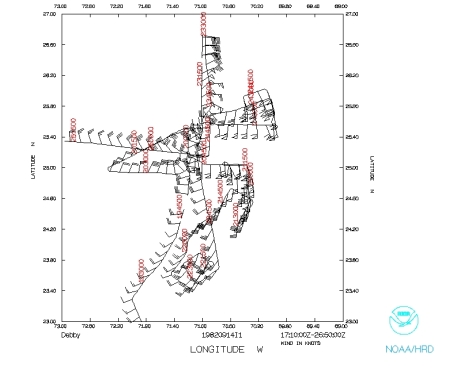
On September 14, 1982, while NOAA42 was flying the first Synoptic Flow experiment, NOAA43 was taking the first Doppler radar readings from an aircraft in a tropical cyclone. The flight into Hurricane Debby was designed to fly several legs into and out of the eye, forming triangular areas where the radar scans would overlap from different segments of the flight track (see figure above). This allowed researchers to calculate (post-flight) the wind vectors within the overlap area. Prior to this, the only wind measurements taken within tropical cyclones were just along the flight track of the aircraft. Now the entire wind field of the core of a hurricane could be calculated from a single flight.

Using the Debby measurements, Frank Marks and Bob Houze (1984) described for the first time important asymmetric TC structure characteristics. Data from orthogonal flight legs from one aircraft were combined into a three-dimensional pseudo-dual-Doppler horizontal wind analysis assuming that features were stationary during the observation time (see figure below). This allowed for the first description of mesocyclones associated with potentially destructive local wind speed maxima superimposed on the basic flow.

References
Marks, F.D. Jr. and R.A. Houze Jr., “Airborne Doppler Radar Observations in Hurricane Debby” Bulletin of the American Meteorological Society, June 1984, Vol. 65, No. 6, pp.569-582